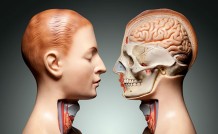Online Class: Introduction to Medical Coding

no certificate
with CEU Certificate*
-
14Lessons
-
14Exams &
Assignments -
6,144Students
have taken this course -
20Hours
average time -
2.0CEUs
Course Description
Mastering Medical Coding: Bridging Communication in Healthcare
In the intricate tapestry of the healthcare industry, the precision and punctuality of paperwork play pivotal roles. Professionals navigate an intricate maze, aiming for faultless documentation that ensures the continuity of care and streamlined reimbursement processes.
Enter the realm of 'medical billing,' a critical sector responsible for chronicling patients' billing histories and orchestrating their submissions to respective insurance companies. This is no mere clerical task. Within its folds lies 'medical coding', a specialized practice where specific codes are mapped to medical procedures and diagnoses. Think of it as translating the diverse and intricate language of medical care into a universally comprehensible dialect—a language that resonates with clinicians, healthcare administrators, insurance carriers, and even governmental agencies. Some might also recognize it as 'insurance coding'.
Such standardized communication is not merely helpful but foundational in modern healthcare. By weaving a common thread through varied medical terminologies, it allows for more transparent, efficient, and effective communication among all stakeholders.
Whether you're a novice stepping into the world of medical coding or a veteran aiming to refine your skills, this course offers a deep dive into the subject. Crafted in accessible language, it promises in-depth insights for everyone—from beginners to seasoned professionals.
Here's a brief overview of our structured lessons:
-
Lesson 1: Introduction to Medical Coding: Unfold the foundational aspects, the 'why' and 'how' of medical coding.
-
Lesson 2: Introduction to Diagnosis Coding: Begin your deep dive into the nuances of diagnostic coding.
-
Lesson 3: ICD-10-CM - What is it?: Understand this international statistical classification system and its relevance in coding various health conditions.
-
Lesson 4: Reimbursement: Explore the financial facet of medical services and how coding impacts healthcare compensation.
-
Lesson 5: Current Procedural Terminology (CPT): Dive into the standardized coding system for reporting medical procedures and services.
-
Lesson 6: CPT Coding and Structure: Understand the architecture of CPT, ensuring accurate and efficient coding.
-
Lesson 7: Evaluation and Management (E/M) Coding: Dive into the intricacies of patient encounters, covering different settings and services.
-
Lesson 8: Surgery and Integumentary System Coding: Decode the world of surgical procedures and skin-related treatments.
-
Lesson 9: Anesthesia CPT Codes: Delve into the unique codes associated with anesthesia administration.
-
Lesson 10: Cardiovascular, Respiratory, Musculoskeletal Systems: Navigate through codes pertaining to these pivotal body systems.
-
Lesson 11: Radiology and Pathology Coding: Journey through the imaging and laboratory aspects of medical care.
-
Lesson 12: Introduction to Documentation (Medical History): Understand the value and method of chronicling a patient's medical journey.
-
Lesson 13: Medical Examination, Decision Making, Selecting the Correct Code: Dive deeper into patient evaluation, ensuring each decision maps perfectly to the right code.
-
Lesson 14: Issues with Fraud and Abuse: Address the ethical dimension of medical coding, highlighting potential pitfalls and best practices.
Our lesson structures come equipped with assignments, polls, and netlinks, enhancing interactive learning and providing students with a 360-degree understanding of the subject.
In an era where healthcare stands at the crossroads of rapid evolution and rising demands, medical coding acts as a critical lynchpin. By effectively bridging the realms of clinical care and administrative processes, it enables a seamless and efficient healthcare experience for both providers and patients. Join us on this enlightening journey, and play a vital role in shaping the future of healthcare communication. Your coding expertise could be the difference that elevates patient care to new heights.
Course Motivation
The healthcare industry, complex and rigorous even for the most knowledgeable and thorough of professionals, requires that paperwork be submitted both in a highly accurate and very timely manner.
The area of healthcare that involves the completion of paperwork outlining patients' billing histories and the submission of that paperwork to the patients' insurance companies for reimbursement is known as "medical billing."
Within medical billing exists the practice of "medical coding," whereby codes are assigned to medical procedures and diagnoses in order to relay--in a universally accepted medical language--information to the insurance company or (in some instances) governmental agencies and/or consulting firms.
Medical billers/coders help physicians' and hospital administrators' by reducing their workloads in matters pertaining to billing and reimbursements.
Essentially, the medical coder translates a physician's notes regarding a patient's medical condition and prescribed treatment(s) into the universally accepted language known as Current Procedural Terminology (CPT)discussed in greater detail within a subsequent chapter either manually or with the assistance of specialized software.
CPT codes exist for all medically-related interactions, i.e., office visits, x-rays, prescription medications, etc. International Classification of Diseases, Clinical Modification (ICD) is a second system in which alpha characters and numbers are used to identify specific diagnoses. A unique combination of both ICD and CPT relay to the third-party payer (insurance company, et al.) the patient's pronounced condition and the treatments received. (Please Note: ICD-10-CM is a separate class).
For payment purposes, there are two primary classes of medical services for which patients are billed: Procedures and Evaluation & Management (E/M) services.
Formerly, medical work operated on what was known as the Usual, Customary and Reasonable system (UCR) in which the costs of procedures and E/Ms were individually determined by the physician or facility in question. However, in light of the government's desire to grant everyone access to equal quality care, standardized methods became required practice.
Therefore, along with ensuring patients are receiving a bare minimum standard of care, they can also be guaranteed that they will not have to be pay excessive fees to receive it.
Additional reasons why the standardized coding system is so important include that the specialization helps deter fraud, and it contributes to the reduction of overall healthcare administrative costs and time overruns.
In addition, medical billing/coding ensures that accurate and detailed records are kept on all patients throughout their lifetime continuum of medical care. Plus, it equips healthcare overseers with factual data from which statistics and forecasting tables can be produced.
In light of the rising costs both inside and outside of the industry, there remains a pervasive, on-going need to reduce costs.
Because they are capable of keeping healthcare costs down and freeing up physicians so that they can focus on medical issues, the future demand for medical billers/coders in the United States, as well as internationally, is anticipated to dramatically increase over the course of the next few years.
Furthermore, additional medical billers/coders are needed because of the increased number of senior citizens (thus, greater need for healthcare-related services).*
*According to the U.S. Bureau of Labor Statistics.
Specific Responsibilities of the Medical Coders' Job
Medical coders are responsible for staying current with medical terminology and correlative codes, and must possess extensive knowledge of the human body, diseases, disorders, applicable medical treatments and regularly used prescription medications.
Focused on the accurate and timely remission of reimbursement, medical billers/coders are expected to communicate well with physicians, patients, and insurance companies. In addition, they also should possess a working knowledge of medical terminology, comprehend the legal and ethical ramifications of the inaccurate labeling of treatments, and have a strong analytical aptitude for coding and decoding billable items.
Education, Training & Certification
In the past, candidates interested in becoming medical coders needed to complete either a two-year or a four-year college program. However, individuals can now acquire the necessary education in medical terminology and training through a technical or vocational school, online program, or correspondence course.
While medical coders do not officially need to be certified in order to perform the responsibilities of the job, many opt to do so as it increases their appeal to employers and their knowledge of the healthcare industry.
Organizations which offer certifications in medical coding include:
The American Health Information Management Association (AHIMA) offers the Certified Coding Specialist (CCS)Hospital certification, which requires that candidates have a minimum of a high school diploma and charges a fee to those who elect to take the exam.
AHIMA also offers the Certified Coding Specialist Physician Based (CCS-P) certification, specifically tailored to those interested in serving private or group practices or other physician-related environments. Eligibility requirements include: possession of a high school diploma and knowledge of specialized coding systems. The certification is supported by both the Society of Clinical Coding (SCC) and the Ambulatory Care Section (ACS). There is a fee to take the exam.
The AAPC also offers the Certified Procedural Coder-Hospital (CPC-H) certification, geared towards the institutional-type setting (hospital) as opposed to the private (physician) practice. The AAPC requires completion of a home training program and the completion of a certification exam given by proctors at a local chapter.
In addition, the AAPC offers a Certified Professional Coder-Payer (CPC-P) certification. This certification is for claims reviewers, utilization management staff, coordination of benefits staff, provider relations and contracting, and customer service staff. A CPC-P must have at least two years coding work experience that includes working with CPT, ICD-10-CM, or HCPCS code sets.
The AAPC requires that each certification maintain a required amount of yearly CEUs. Each examination requires a fee.
Both the AHIMA and AAPC require that exam takers score a minimum of 70 percent or better on their exams in order to qualify for passing status and, thus, earn their respective certifications.
In addition, often times, as a follow-up to a passing grade on the CCS or CCS-P exam, the AHIMA may also conduct an in-person interview to ensure candidates are suitably well-versed in the areas of: medical terminology, coding protocols, patient charts, physiology, and medical/human anatomy.
The advantage to those with such credentials is that their qualifying organizations--the AHIMA or the AAPC--can help place them in medical coding positions with reputable organizations or medical office settings.
Regardless of which specific certification you decide to acquire (if, in fact, you decide to acquire any), the types of information you will need to be successful as a professional medical coder include:
- Basic medical terminology
- Basic claims process for medical insurance reimbursement
- Methodologies for completing common insurance forms
- Guidance for using medical billing software
- Introduction to diagnostic and procedural coding systems
Specialties related to medical billing include:
- Medical coding
- Medical billers
- Medical auditors
- Medical claims reviewers
- Billing coordinators
- Reimbursement specialists
- Patient account representatives
- Medical claims analyst
- Medical claims processors
- Medical collectors
Fortunately, your efforts won’t be in vain – they'll pay off in dividends. Job opportunities are everywhere!
Some schools and programs charge thousands of dollars to train professionals in the art of medical coding and billing.
But what if you don't have thousands of dollars to spend?
Not everyone can qualify for grants and financial aid packages. Others still can’t take time away from their schedules at work or home to attend traditional classes.
What's your situation?
Medical coding, which is also known as insurance coding is an increasingly popular field and trained students are always in demand. And unlike so many other careers, that demand isn’t likely to diminish anytime soon. It’s an essential skill that the healthcare industry couldn’t operate without. It not only creates and maintains a unified, Universal language that doctors rely on, but one essential to administrators, insurance companies, lawyers and other officials as well.
Whether you’re looking for a new job or simply greater job security, don’t let yourself fall behind. Enrollment is always open, so there’s no reason you can’t get started right now!
Medical Coding 101 is ideal for serious students that can handle the freedom of a virtual, self-paced classroom without falling behind in their studies. In order to succeed, you’ve got to be committed and disciplined.
One of the reasons that this course is so demanding is that the field of medical coding is demanding in and of itself. That’s because the medical and healthcare industries aren’t just about patients and diagnoses – it’s also about paperwork. And there’s a lot of that!
For every doctor, there are sometimes several hundred patients. And each of those patients has medical histories, insurance plans with all the hoops and loopholes, referrals and much more. And every sheet of paper for every patient will be processed by a medical coder at some point.
Don’t let the behind-the-scenes nature of the job fool you – medical coding is vitally important – mandatory even – because it both creates AND maintains a universal language that everyone in the field needs to effectively communicate and get things done.
This is a great preparation course that will not only help you enter but excel in the complex and rigorous role of a medical coder.
Over the course of 17 in-depth lessons, you’ll immerse yourself in this new language, with all of its quirks and quips. You’ll take a look at issues and questions such as:
· What is medical coding?
· What is diagnosis coding?
· ICD-10-CM: What is it and what does it do?
· Reimbursement
· Coding practice problems
· Procedural terminology
· CPT coding
· And much, much more!
While the completion of this course doesn’t require that you buy any textbooks or class materials, the instructor does have a few recommendations to optimize your success:
- A working knowledge of medical terminology (which you can also learn about here at UniversalClass)
- A grasp of the basics of Anatomy and Physiology (also available on UniversalClass)
We’re not denying it – this course isn’t going to be easy. It’s going to take some work! But it’s more than worth the investment!
However, you can get a head start on success by getting started on this class today. Enrollment is open 24/7, so there’s no excuse to put it off any longer!
- Completely Online
- Self-Paced
- 6 Months to Complete
- 24/7 Availability
- Start Anytime
- PC & Mac Compatible
- Android & iOS Friendly
- Accredited CEUs
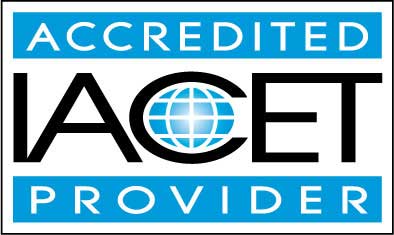
Course Lessons
Lesson 1: Introduction to Medical Coding
 Lesson discussions: Medical Billing Class; Reasons for Taking this Course
Lesson discussions: Medical Billing Class; Reasons for Taking this Course Complete Assignment: Course Introduction and Goals
Complete Assignment: Course Introduction and Goals Assessment: Lesson Exam 1
Assessment: Lesson Exam 1
Lesson 2: Introduction to Diagnosis Coding
 Lesson discussions: Please rate Lesson 2: Introduction to Diagnosis Coding
Lesson discussions: Please rate Lesson 2: Introduction to Diagnosis Coding Assessment: Lesson Exam 2
Assessment: Lesson Exam 2
Lesson 3: ICD-10-CM - What is it?
 Lesson discussions: Please rate Lesson 4: ICD-CM - What is it?
Lesson discussions: Please rate Lesson 4: ICD-CM - What is it? Assessment: Lesson Exam 3
Assessment: Lesson Exam 3
Lesson 4: Reimbursement
 Lesson discussions: Please rate Lesson 5: Reimbursement
Lesson discussions: Please rate Lesson 5: Reimbursement Assessment: Lesson Exam 4
Assessment: Lesson Exam 4
Lesson 5: Current Procedural Terminology (CPT)
 Lesson discussions: Please rate Lesson 6: Current Procedural Terminology (CPT)
Lesson discussions: Please rate Lesson 6: Current Procedural Terminology (CPT) Assessment: Lesson Exam 5
Assessment: Lesson Exam 5
Lesson 6: CPT Coding and Structure
 Lesson discussions: Please rate Lesson 8: CPT Coding and Structure
Lesson discussions: Please rate Lesson 8: CPT Coding and Structure Assessment: Lesson Exam 6
Assessment: Lesson Exam 6
Lesson 7: Evaluation and Management (E/M) Coding
 Lesson discussions: Please rate Lesson 8: Evaluation and Management (E/M) Coding
Lesson discussions: Please rate Lesson 8: Evaluation and Management (E/M) Coding Assessment: Lesson Exam 7
Assessment: Lesson Exam 7
Lesson 8: Surgery and Integumentary System Coding
 Lesson discussions: Please rate Lesson 9: Surgery and Integumentary System Coding
Lesson discussions: Please rate Lesson 9: Surgery and Integumentary System Coding Assessment: Lesson Exam 8
Assessment: Lesson Exam 8 Assessment: Lesson 8 - Let's Code!
Assessment: Lesson 8 - Let's Code!
Lesson 9: Anesthesia CPT Codes
 Lesson discussions: Please rate Lesson 10: Anesthesia CPT Codes
Lesson discussions: Please rate Lesson 10: Anesthesia CPT Codes Assessment: Lesson Exam 9
Assessment: Lesson Exam 9
Lesson 10: Cardiovascular, Respiratory, Musculoskeletal Systems
 Lesson discussions: Please rate Lesson 11: Cardiovascular, Respiratory, Musculoskeletal Systems
Lesson discussions: Please rate Lesson 11: Cardiovascular, Respiratory, Musculoskeletal Systems
Lesson 11: Radiology and Pathology Coding
 Lesson discussions: Please rate Lesson 12: Radiology and Pathology Coding
Lesson discussions: Please rate Lesson 12: Radiology and Pathology Coding Assessment: Lesson Exam 11
Assessment: Lesson Exam 11
Lesson 12: Introduction to Documentation (Medical History)
 Lesson discussions: Please rate Lesson 14: Introduction to Documentation (Medical History)
Lesson discussions: Please rate Lesson 14: Introduction to Documentation (Medical History) Assessment: Lesson Exam 12
Assessment: Lesson Exam 12
Lesson 13: Medical Examination, Decision Making, Selecting the Correct Code
 Lesson discussions: Please rate Lesson 15: Medical Examination, Decision Making, Selecting the Correct Code
Lesson discussions: Please rate Lesson 15: Medical Examination, Decision Making, Selecting the Correct Code
Lesson 14: Issues with Fraud and Abuse
 Lesson discussions: What is your opinion of this course?; Program Evaluation Follow-up Survey (End of Course); Course Comments
Lesson discussions: What is your opinion of this course?; Program Evaluation Follow-up Survey (End of Course); Course Comments Assessment: Lesson Exam 14
Assessment: Lesson Exam 14
Learning Outcomes
- Define medical coding.
- Summarize diagnosis coding.
- Define ICD-9-CM and summarize its coding and structure.
- Describe the reimbursement process.
- Demonstrate solving ICD-9-CM coding practice problems.
- Define Current Procedural Terminology (CPT) and summarize its coding and structure.
- Demonstrate Evaluation and Management (E/M) Coding.
- Demonstrate Surgery and Integumentary System Coding.
- Demonstrate using Anesthesia CPT Codes.
- Demonstrate coding for Cardiovascular, Respiratory, Musculoskeletal Systems.
- Demonstrate Radiology and Pathology Coding.
- Solve CPT Coding Practice Problems.
- Summarize documentation procedures.
- Summarize issues with fraud and abuse.
- Demonstrate mastery of lesson content at levels of 70% or higher.
Additional Course Information
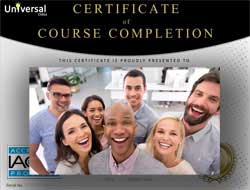
- Document Your Lifelong Learning Achievements
- Earn an Official Certificate Documenting Course Hours and CEUs
- Verify Your Certificate with a Unique Serial Number Online
- View and Share Your Certificate Online or Download/Print as PDF
- Display Your Certificate on Your Resume and Promote Your Achievements Using Social Media
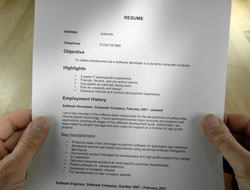
Choose Your Subscription Plan
No Certificate / No CEUs
This course only
| Includes certificate | X |
| Includes CEUs | X |
| Self-paced |

|
| Instructor support |

|
| Time to complete | 6 months |
| No. of courses | 1 course |
Certificate & CEUs
This course only
| Includes certificate |

|
| Includes CEUs |

|
| Self-paced |

|
| Instructor support |

|
| Time to complete | 6 months |
| No. of courses | 1 course |
Certificates & CEUs
Includes all 600+ courses
| Includes certificate |

|
| Includes CEUs |

|
| Self-paced |

|
| Instructor support |

|
| Time to complete | 12 Months |
| No. of courses | 600+ |
Certificates & CEUs
Includes all 600+ courses
| Includes certificate |

|
| Includes CEUs |

|
| Self-paced |

|
| Instructor support |

|
| Time to complete | 24 Months |
| No. of courses | 600+ |
Student Testimonials
- "Instructor was awesome and very helpful. Thank you tons." -- Constance W.
- "Instructor was very helpful." -- Wanda W.
Related Courses
-
 74 hours
7.4 CEUs
Medical Billing and Coding Course Bundle
+ More Info
74 hours
7.4 CEUs
Medical Billing and Coding Course Bundle
+ More Info
-
 6 hours
0.6 CEUs
Advocacy for Elderly Patients
+ More Info
6 hours
0.6 CEUs
Advocacy for Elderly Patients
+ More Info
-
 20 hours
2.0 CEUs
CPT Coding for Beginners
+ More Info
20 hours
2.0 CEUs
CPT Coding for Beginners
+ More Info
-
 8 hours
0.8 CEUs
Medical Office Administrative Operations
+ More Info
8 hours
0.8 CEUs
Medical Office Administrative Operations
+ More Info
-
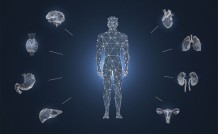 33 hours
3.3 CEUs
Comprehensive Medical Terminology 1 & 2
+ More Info
33 hours
3.3 CEUs
Comprehensive Medical Terminology 1 & 2
+ More Info
-
 7 hours
0.7 CEUs
Caring for Seniors
+ More Info
7 hours
0.7 CEUs
Caring for Seniors
+ More Info
-
 4 hours
0.4 CEUs
Diabetes 101
+ More Info
4 hours
0.4 CEUs
Diabetes 101
+ More Info
-
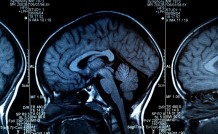 7 hours
0.7 CEUs
Alzheimer's Disease 101
+ More Info
7 hours
0.7 CEUs
Alzheimer's Disease 101
+ More Info
-
 7 hours
0.7 CEUs
Understanding Concussions
+ More Info
7 hours
0.7 CEUs
Understanding Concussions
+ More Info
-
 5 hours
0.5 CEUs
End of Life Care
+ More Info
5 hours
0.5 CEUs
End of Life Care
+ More Info
-
 2 hours
0.2 CEUs
Careers in Healthcare
+ More Info
2 hours
0.2 CEUs
Careers in Healthcare
+ More Info
-
 5 hours
0.5 CEUs
HIV: Prevention, Diagnosis, Treatment
+ More Info
5 hours
0.5 CEUs
HIV: Prevention, Diagnosis, Treatment
+ More Info
-
 30 hours
3.0 CEUs
Microbiology 101
+ More Info
30 hours
3.0 CEUs
Microbiology 101
+ More Info
-
 4 hours
0.4 CEUs
Asthma 101
+ More Info
4 hours
0.4 CEUs
Asthma 101
+ More Info
-
 10 hours
1.0 CEUs
Healthcare Code and Conduct
+ More Info
10 hours
1.0 CEUs
Healthcare Code and Conduct
+ More Info
-
 6 hours
0.6 CEUs
HIPAA Compliance 101
+ More Info
6 hours
0.6 CEUs
HIPAA Compliance 101
+ More Info
-
 17 hours
1.7 CEUs
ICD-10: Medical Coding
+ More Info
17 hours
1.7 CEUs
ICD-10: Medical Coding
+ More Info
-
 5 hours
0.5 CEUs
Aging and Long Term Care 101
+ More Info
5 hours
0.5 CEUs
Aging and Long Term Care 101
+ More Info
-
 17 hours
1.7 CEUs
Medical Terminology 201
+ More Info
17 hours
1.7 CEUs
Medical Terminology 201
+ More Info
-
 22 hours
2.2 CEUs
Medical Abbreviations
+ More Info
22 hours
2.2 CEUs
Medical Abbreviations
+ More Info
-
 18 hours
1.8 CEUs
Introduction to Cell and Molecular Biology
+ More Info
18 hours
1.8 CEUs
Introduction to Cell and Molecular Biology
+ More Info


